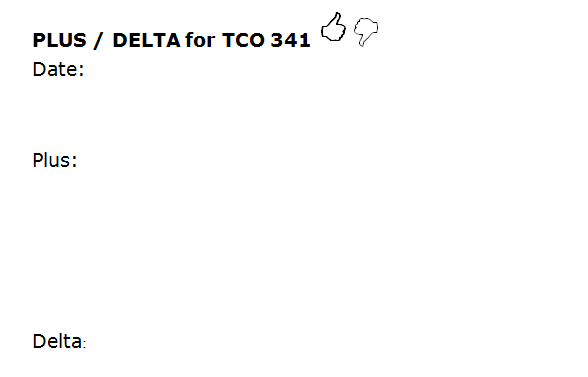Some instructors never offer it under any circumstances. Others embrace it as a way to help students learn the course material or improve a disappointing test score. And a small minority, if pushed, will admit they only offer it when students wear them down until they finally gave in to it.
Read more ›CURRENT ARTICLE • November 09
OTHER RECENT ARTICLES
Professors teach in a vacuum; we enter the classroom, deliver our lessons, and leave, and rarely get any feedback on the quality of our instruction before the end of the semester when formal faculty evaluations are completed by students. Other than grades on tests and other assessments, we really don’t know for sure if students are learning what we are teaching, and we often don’t have a good handle on whether our instruction is working.
Read More ›As an instructor of Cisco Networking Academy training for 12 years, I’ve tried many types of teaching strategies. The students in this area of the CIS Department bring various technical and soft skills to the classroom, from less-than-fundamental to exceptional. In relation to these skills, The National Business Education Association (Glenn, 2011) reported that workforce requirements suggest that educational institutions should do more to help their students develop the “four Cs”: critical thinking, creativity, communication, and collaboration.
Read More ›Most students hate cumulative exams, largely because of the sheer volume of course material they need to study and demonstrate proficiency in. But there’s another reason, especially in courses where there are formulas or specific tools that need to be used, and it has to do with how well they truly understand the course material.
Read More ›While some college faculty bemoan the fact that their students are not critical thinkers, expressive writers, or otherwise scholarly inclined; those of us in professional schools, especially at the graduate level, may have the opposite problem. Our students may be so bright they scare our socks off.
Read More ›Student ratings can provide helpful and legitimate feedback. Unfortunately, all too often, students give very little time or thought to end-of-course evaluations, or they use them as an opportunity to make mean-spirited comments about the instructor. And, all things being equal, an instructor who teaches a challenging course will score lower than an instructor whose course is less rigorous.
Read More ›Creating an environment that engages students in the learning journey is not always easy. Sometimes as faculty members we ask ourselves, “Are we taking this learning journey by ourselves?” Several years ago as I began my scholarly exploration of the utility of mind mapping as a teaching and learning tool to foster critical thinking, my colleague and I instituted a mind mapping learning activity which has helped to promote student engagement in the classroom.
Read More ›The goal of most majors is to develop the kind of critical thinking skills students will need to address the not clearly defined and conceptually complicated problems that most professionals regularly face. Faculty in the Finance Department at Seattle University wondered if they were preparing their majors to solve these kinds of problems.
Read More ›Student entitlement can be defined academically: “a self-centered disposition characterized by a general disregard for traditional faculty relationship boundaries and authority” (p. 198), or it can be described more functionally: “a sense that they [students] deserve what they want because they want it and want it now.” (p. 197)
Read More ›Frustrated with the traditional lecture format in an upper-level chemistry class that enrolled more than 100 students, and envious of my teaching assistants who spent time in small recitations working on problem solving with my students, I designed an approach I call the “The Front Row.” It brings a small group feel into a large classroom.
Read More ›





